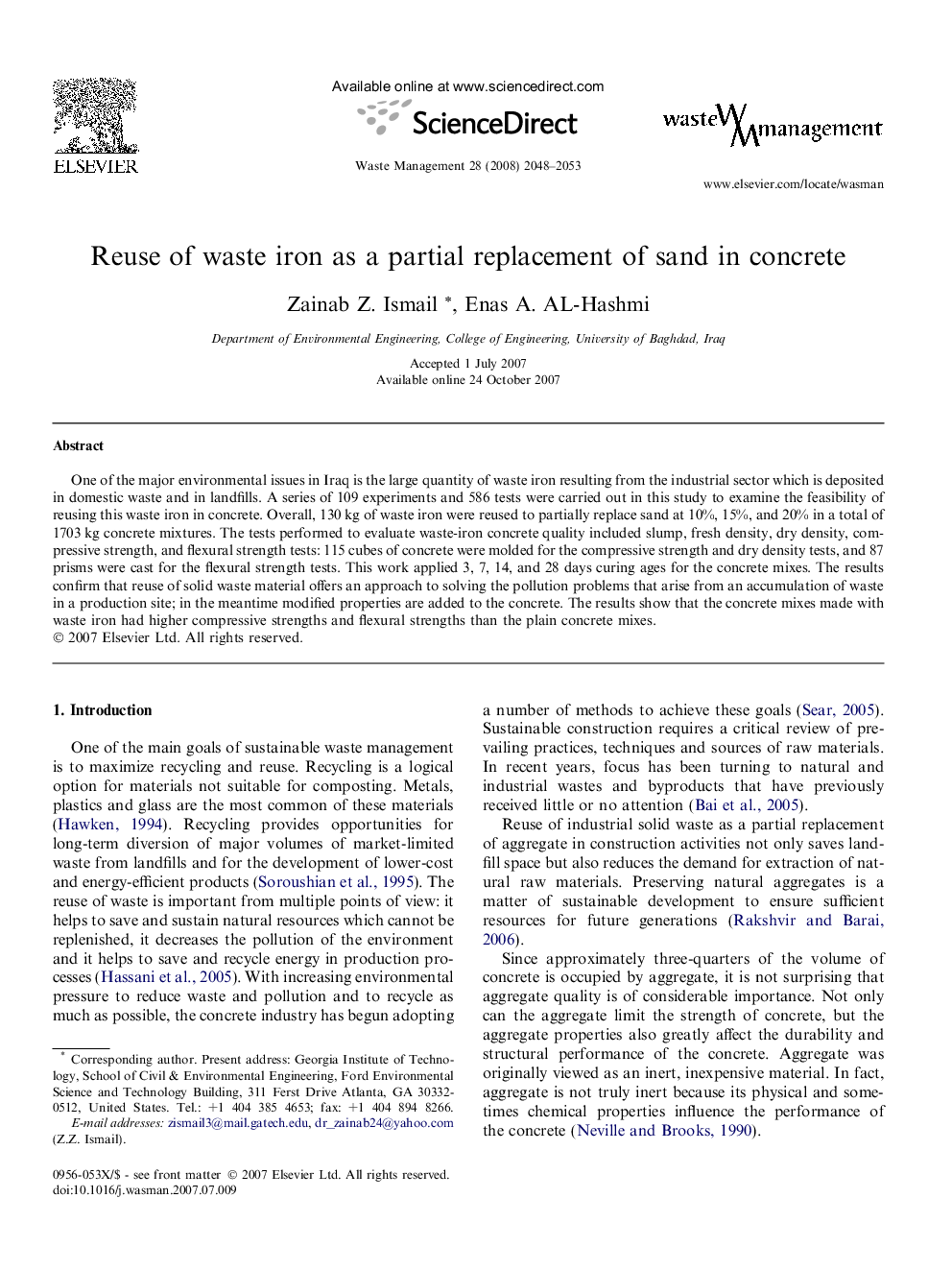| Article ID | Journal | Published Year | Pages | File Type |
|---|---|---|---|---|
| 4473465 | Waste Management | 2008 | 6 Pages |
One of the major environmental issues in Iraq is the large quantity of waste iron resulting from the industrial sector which is deposited in domestic waste and in landfills. A series of 109 experiments and 586 tests were carried out in this study to examine the feasibility of reusing this waste iron in concrete. Overall, 130 kg of waste iron were reused to partially replace sand at 10%, 15%, and 20% in a total of 1703 kg concrete mixtures. The tests performed to evaluate waste-iron concrete quality included slump, fresh density, dry density, compressive strength, and flexural strength tests: 115 cubes of concrete were molded for the compressive strength and dry density tests, and 87 prisms were cast for the flexural strength tests. This work applied 3, 7, 14, and 28 days curing ages for the concrete mixes. The results confirm that reuse of solid waste material offers an approach to solving the pollution problems that arise from an accumulation of waste in a production site; in the meantime modified properties are added to the concrete. The results show that the concrete mixes made with waste iron had higher compressive strengths and flexural strengths than the plain concrete mixes.
